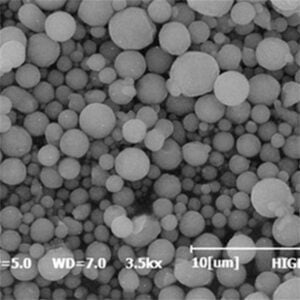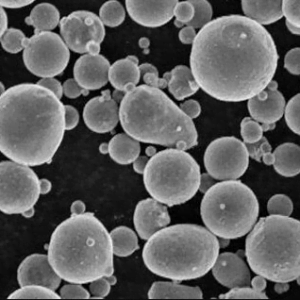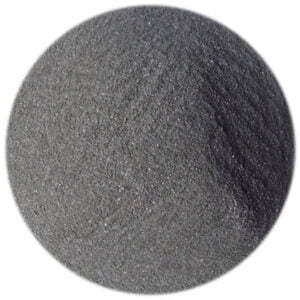Vale Nickel Powder
Table of Contents
vale nickel powder is a versatile material with uses across various industries. Vale, a leading global producer of nickel, manufactures high-quality nickel powder tailored to meet the specific requirements of different applications.
Overview of Vale Nickel Powder
Vale nickel powder is known for its:
- High purity
- Uniform particle size distribution
- Consistent chemistry
- Good flowability
- Optimized packing density
Key properties that make vale nickel powder suitable for multitude of applications:
| Property | Characteristics |
|---|---|
| Composition | High-purity nickel (99%+) |
| Particle shape | Spherical, porous structure |
| Size range | From submicron to 100 microns |
| Apparent density | Up to 65% of theoretical density |
| Flowability | Free-flowing, especially lubricated grades |
| Thermal stability | Stable microstructure up to 900°C |
These properties allow for excellent performance in applications like metal additive manufacturing, alloy production, brazing, diamond tools, electronics, and batteries.

Types of Vale Nickel Powder
Vale produces various types of nickel metal powders customized for different production processes and end-use requirements:
Carbonyl Nickel Powder
- Produced via carbonyl process allowing tight control of powder characteristics
- Available in different particle size distributions:
- Grade 123: 3-7 microns
- Grade 287: extra-fine <1 micron
- High purity (99.8% nickel), spherical morphology, large specific surface area
Electrolytic Nickel Powder
- Manufactured through electrolytic process
- Cost-effective option
- Lower carbon content compared to carbonyl powder
- Range of particle sizes up to 100 microns
- Irregular particle morphology
Annealed Nickel Powder
- Carbonyl nickel subjected to annealing treatment
- Improved flowability
- Relaxed microstructure
- Better packing density
- Used in demanding applications like additive manufacturing
Composition of Vale Nickel Powder
The typical composition of vale carbonyl nickel powder is:
| Element | Composition (% weight) |
|---|---|
| Nickel (Ni) | ≥ 99.8 |
| Carbon (C) | 0.25 – 0.60 |
| Oxygen (O) | 0.20 – 0.50 |
| Sulfur (S) | 0.001 – 0.006 |
Custom alloy grades with addition of elements like iron, copper, molybdenum also offered.
Key Properties of Vale Nickel Powder
Vale nickel powder demonstrates a unique combination of properties that make it suitable for wide range of applications:
Particle Size Distribution
- Consistent particle sizes optimized for specific application needs
- Custom blends of powder sizes provided
- Range from sub-micron grades to 100 micron powders
| Grade | Particle Size (microns) |
|---|---|
| Carbonyl 123 | 3 – 7 |
| Carbonyl 255 | 10 – 25 |
| Carbonyl 287 | < 1 |
| Electrolytic 45 | 45 nominal |
Morphology
- Spherical particle shape allows excellent flowability
- Porous structure enables better alloying and sintering
Apparent Density
- Density up to 65% of nickel’s theoretical density 8.9 g/cc
- Custom blends optimized for powder bed density requirements
| Grade | Apparent Density (g/cc) |
|---|---|
| Carbonyl 287 | 1.0 – 4.0 |
| Electrolytic 45 | 2.2 – 3.2 |
Flow Characteristics
- Most grades free-flowing as-produced
- Lubricants applied for enhanced flowability
- Hall flow rates of > 15 s/50 g demonstrated
Thermal Stability
- Stable metallurgical structure up to 900°C
- Low carbon content minimizes carbon absorption during sintering
Applications of Vale Nickel Powder
Thanks to its versatile powder characteristics, vale nickel powder finds numerous applications across variety of industries:
Additive Manufacturing
- Ideal spherical morphology, optimized size distribution
- Provides excellent flow and packing density for powder bed printing
- Used in binder jetting, directed energy deposition, metal extrusion types of 3D printing
Metal Injection Molding (MIM)
- Combination of powder properties optimal for MIM process
- High sintered density up to 94% demonstrated
- Excellent combination of strength and ductility after MIM
Diamond Tools
- Used as binder material in diamond tooling segments
- Provides thermal stability, corrosion resistance
- Maximizes cutting performance and tool life
Alloy & Chemical Production
- Widely used as feedstock for alloy, stainless steel, catalyst production
- Spherical porous particles enable excellent blendability with other elements
- Outperforms atomized & electrolytic nickel powder
Brazing & Joining
- Facilitates strong joints across range of materials
- Suitable for flux-free vacuum brazing processes
- Provides corrosion resistance, high-temperature strength
Electronics & Capacitors
- Ultra-fine grades used in conductive/resistive pastes, circuits
- Micron sizes applied in self-healing capacitors
- Enables miniaturization of electronic components
Batteries
- Pure porous structure optimal for battery compounds
- Increased surface area allows improved energy density
- Enhances battery life, power output, and efficiency
Nickel Powder Specifications
Vale nickel powder is manufactured to exceed the compositional and size requirements defined by international specifications:
| Standard | Grade | Particle Size (microns) |
|---|---|---|
| ASTM B842 | Carbonyl 255 | 10-25 |
| ISO 4491 | Carbonyl 45 | 25-45 |
| JIS H5103 | Carbonyl 287 | <1 |
Custom powder blends Tailored to application requirements in terms of:
- Particle shape
- Size distribution
- Apparent density
- Flow characteristics
- Surface treatment
Global Suppliers of Vale Nickel Powder
As one of the largest nickel producers globally, Vale has an extensive international supply chain for its nickel powder products:
North & South America
Vale Canada, Vale Nouvelle-Calédonie
Europe
Vale Norway, Vale Finland
Asia
Sumitomo Metal Mining (SMM), China Nickel & Cobalt
Pricing varies based on:
- Quantity and purchase agreements
- Energy and commodity market dynamics
- Geographic location
- Import/export taxes and duties
Contact Vale or its authorized distributors for latest price rates in your region.
Comparative Analysis of Nickel Powder Grades
| Parameter | Carbonyl | Electrolytic | Gas Atomized |
|---|---|---|---|
| Composition | High purity (99%+ Ni) | Medium purity (~99% Ni) | High purity (99%+ Ni) |
| Particle shape | Perfectly spherical | Irregular, spiky | Rounded, irregular |
| Size range | 0.5 – 45 μm | Up to 150 μm | 20 – 150 μm |
| Flowability | Excellent | Moderate | Fair |
| Apparent density | Up to 65% theoretical | Up to 75% theoretical | Up to 98% theoretical |
| Surface oxides | Low | High | Low |
| Cost | High | Low | Medium |
Advantages of Carbonyl Nickel Powder
- Consistent spherical morphology allows exceptional packing and flow characteristics
- Narrow distribution of small particles sizes enables high-resolution printing
- Purity exceeding 99% nickel ensures performance reproducibility and avoids contamination
- Stable microstructure up to 900°C facilitates processing into alloys and composites
- Cost-effective compared to gas atomized nickel powder
Limitations
- More expensive than electrolytic powder grades
- Lower apparent density not suitable for all MIM applications
- Ultra-fine grades prone to oxidation if not handled properly

FAQs
Q: What is the difference between carbonyl and electrolytic nickel powder?
A: Carbonly nickel powder manufactured via carbonyl process has high purity(99%+ Ni), spherical morphology and narrow size distribution.Electrolytic nickel powder produced through electrolysis has slightly lower purity, irregular shapes and wider range of relatively larger particles sizes.
Q: Does vale nickel powder require any post-processing before use?
A: Most standard grades of vale nickel powder are ready to use as-received. Some applications may require additional steps like annealing, lubricant-treatment, blending with other powders which can be customized as per application requirements.
Q: What is the chemical composition of vale’s nickel metal powder?
A: The typical composition is minimum 99.8% Ni along with trace amounts of elements like C(0.2 – 0.6%), O(0.20 – 0.50%), S(0.001 – 0.006%). The high Ni-content ensures high performance across range of applications.
Q: What particle size range of vale nickel powder is suitable for metal 3D printing?
A: For binder-jetting and bed fusion 3D printing, the recommended powder size range is 15-45 microns. Ultra-fine grades under 10 microns can also be used for high-resolution printing applications.
Q: Does vale nickel powder meet regulatory standards for medical applications?
A: Yes, vale ensures compliance to chemical composition and production quality requirements as per ASTM standards for medical, dental and biocompatibility applications. Documentation can be provided as per ISO 13485 norms.
Q: What is the typical lead time for procuring vale nickel metal powders?
A: Vale ships majority grades ex-stock with 1-2 weeks delivery lead time for standard orders. Higher quantity purchases may require 8-12 weeks depending on market dynamics. Contact Vale sales team for current lead time estimate.
Q: What is the shelf life of unopened packages of vale nickel powder?
A: Sealed packages have a shelf life of up to 2 years from date of production. Ensure powder is stored as per guidelines to prevent oxidation and contamination during storage.
Q: Does vale offer technical support in using their nickel powder products?
A: Yes, Vale has an extensive global technical support network to assist customers in selecting optimal grades and processing parameters tailored to their specific application requirements.
Share On
MET3DP Technology Co., LTD is a leading provider of additive manufacturing solutions headquartered in Qingdao, China. Our company specializes in 3D printing equipment and high-performance metal powders for industrial applications.
Inquiry to get best price and customized Solution for your business!
Related Articles
About Met3DP
Recent Update
Our Product
CONTACT US
Any questions? Send us message now! We’ll serve your request with a whole team after receiving your message.

Metal Powders for 3D Printing and Additive Manufacturing
COMPANY
PRODUCT
cONTACT INFO
- Qingdao City, Shandong, China
- [email protected]
- [email protected]
- +86 19116340731

















